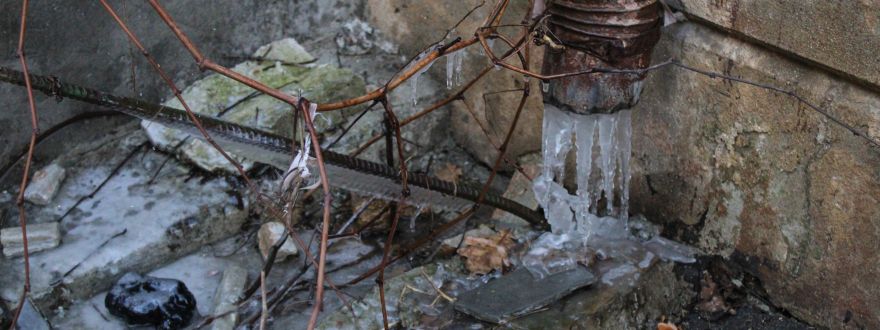
What should you do if a water pipe freezes? You should make sure it never happens again! When the water freezes, it tries to expand inside the pipe. It pushes against the sides of the pipe, as well as any nearby valves, seams and faucets. The freezing action of the water is more than capable of rupturing any pipe.
Unfortunately, a water pipe may freeze even if you have taken precautions. Perhaps you lost electrical power for several hours, the temperature inside your house fell and the pipes froze. Or maybe you left on vacation, turned down the heat and weren't expecting an early blizzard. Or perhaps your heat tape quit working, and you didn't find out until you discovered none of the faucets worked.
Whatever the cause, it's important that you thaw out your pipe for two reasons:
- You almost certainly need the water.
- You should be at home when the pipe thaws, just in case the pipe and/or joint is ruptured.
Bear in mind that a frozen pipe doesn't leak – the water is ice. You'll discover you have a leak only after the ice melts. If you're not home, a ruptured pipe can cause a great deal of damage.
Here are some methods to thaw out frozen pipes:
CAUTION!: Before you try any of these methods, first open the faucet the frozen pipe supplies. The steam you create while heating the pipe can burst the pipe if it doesn't have an escape.
Method #1:
Use electric heat tape on the pipe, and wait for it to thaw out. This is a good method to use because it slowly thaws the pipe, which means it reduces wear and tear on the pipe itself.
CAUTION!: Remember to use only heat tape certified by a nationally recognized testing laboratory for use with mobile homes. Be careful never to wrap the heat tape back over itself. This could cause the heat tape to overheat and start a fire.
Method #2:
Wrap the pipe with several layers of cloth or toweling and pour hot water over the cloth / toweling. Repeat several times until the pipe is unfrozen.
Method #3:
Direct a heat lamp on the pipe itself. Place the lamp at least a foot away from the pipe. Cover adjacent areas with a layer of aluminum foil so the heat does not scorch these materials. Make sure the heat lamp is on dry ground. Even better, plug it into a ground Fault Circuit Interrupter (GFCI) outlet.
CAUTION!: Do not use any direct heating method if the frozen pipe is next to a gas pipe! Call a professional for help.
Method #4:
Hold a hand-operated hair dryer to the pipe, and slowly move up and down the length of the frozen section. Make sure you are standing on dry ground. Because you are working this close to water, plug the dryer into a GFCI protected outlet.
You will know the pipe is thawed out when water starts to trickle out of the open faucet. Let the water run for a while to completely clear the pipe. Then, close the faucet and check for leaks.
CAUTION!: Do not use a propane torch to thaw out frozen pipes. Do not use a propane torch even if it has a fire spreader attachment. This is not only a fire hazard, bit it's also a quick way to destroy your plastic plumbing pipes.
This week's blog is courtesy of our Barber's own collaborator and company - Foremost Insurance! Want to know more about the policies they offer through Barber Insurance? Give us a ring at 707-526-7900 or shoot us an email at info@barberinsurance.com





